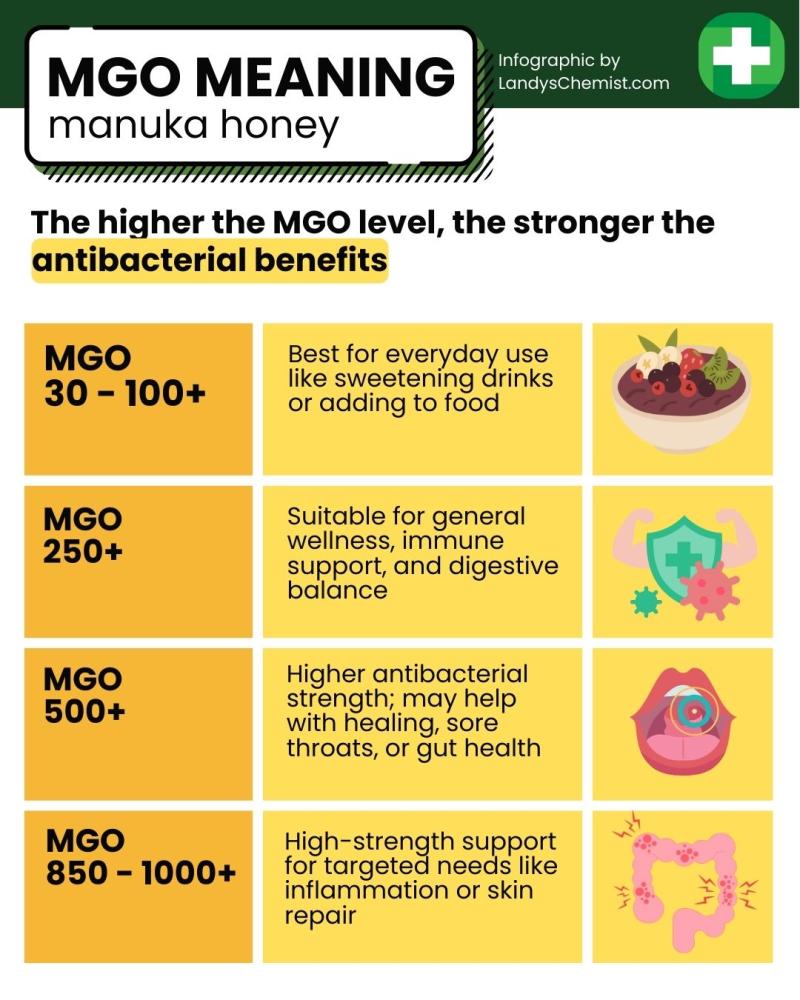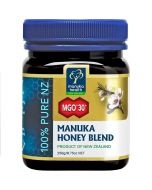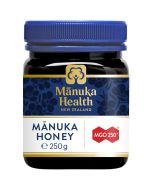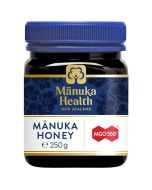
MGO meaning in Manuka Honey: Methylglyoxal Guide
Manuka honey has gained global recognition as a superior form of honey due to its antibacterial properties and health benefits. But what exactly is methylglyoxal (MGO), and why is it such an important factor in determining the quality of Manuka honey? This blog dives into the science behind MGO, its health benefits, and how to choose the right MGO level for your needs.
What is MGO?
MGO stands for methylglyoxal, a naturally occurring compound that gives Manuka honey its unique antibacterial strength. Formed from the nectar of the Manuka flower (native to New Zealand and southeast Australia), MGO is produced during a natural chemical process in the beehive.
The MGO number on Manuka honey labels indicates the level of methylglyoxal it contains. The higher the MGO rating, the stronger its antibacterial potential. Unlike regular honey, which contains minimal MGO, Manuka honey is rich in this active compound, making it more effective for skin, wound, and immune support.
How MGO Works in the Body
MGO in Manuka honey has powerful antibacterial properties, helping to fight bacteria, reduce inflammation, and promote healing. Additionally, research reports that Manuka honey, rich in MGO, can stimulate tissue regeneration and facilitate wound debridement. Higher MGO levels are more effective in treating infections, aiding wound healing, and supporting digestion.
Pharmacist Neesha Desai from Landys Chemist explains, “MGO is the compound that makes Manuka honey so effective for treating bacterial infections. Whether applied topically or consumed, higher MGO content can help accelerate the healing process and support overall immune health.”
What Does the MGO Rating Mean?

The MGO rating on a jar of Manuka honey tells you how much methylglyoxal is present. For instance, a honey with a rating of MGO 300 contains 300 milligrams of methylglyoxal per kilogram of honey.
The MGO scale typically ranges from 30 to over 1000, with higher MGO ratings corresponding to stronger antibacterial properties. For example, MGO 500 is ideal for treating more severe conditions like skin infections or digestive problems, while MGO 100 or 200 is typically sufficient for general wellness use.
What are the Benefits of MGO Manuka Honey?
MGO (methylglyoxal) is the main compound that provides Manuka honey with it's unqiue health benefits. The compound’s ability to combat harmful bacteria makes it useful for a variety of purposes, including:
- Antibacterial and antimicrobial protection: MGO is known for its ability to help inhibit the growth of certain bacteria, which may support immune function and skin health.
- Wound healing and tissue repair: Manuka honey is sometimes used in clinical wound care settings, where research suggests it may support healing and help reduce the risk of infection.
- Skin support for inflammatory conditions: Early studies indicate it may be beneficial for acne-prone or inflamed skin, including conditions such as blemishes and rosacea.
- Digestive health and gut balance: Some research suggests Manuka honey may help maintain a healthy gut microbiome and soothe digestive discomfort.
- Immune system support: Due to its natural antibacterial and anti-inflammatory properties, it may contribute to overall immune health.
- Oral health benefits: Research has shown that it may help reduce plaque buildup and gingival inflammation, supporting good oral hygiene.
- Sore throat relief: Manuka honey is traditionally used to soothe sore throats, and some evidence suggests it may help reduce bacteria in the throat.
Pharmacist Neesha Desai adds, “Many patients report significant improvement in conditions such as ulcers, sore throats, and even acne when using Manuka honey with a higher MGO rating. It’s a versatile product that can be used for both internal and external health needs.”
How to Choose the Right MGO Level in Manuka Honey
Choosing the right MGO (methylglyoxal) level depends on how you plan to use Manuka honey:
- MGO 30+ to 100+ – Best for everyday use like sweetening drinks or adding to food
- MGO 250+ – Suitable for general wellness, immune support, and digestive balance
- MGO 500+ – Offers higher antibacterial strength; may help with healing, sore throats, or gut health
- MGO 850+ to 1000+ – High-strength support for targeted needs like inflammation or skin repair
Higher MGO = stronger antibacterial activity. Always choose based on your health goals and how often you’ll use it.
Conclusion
MGO (methylglyoxal) is the naturally occurring compound that gives Manuka honey its unique antibacterial power. The MGO rating shows how much methylglyoxal the honey contains, the higher the MGO rating, the stronger it's antibacterial effects are. MGO 100+ is ideal for daily wellness, while MGO 250–400+ supports digestion and immunity. For targeted support like wound healing or infection relief, MGO 500+ is more suitable.
Shop from our range of high quality, trusted Manuka Honey products
People Also Ask:
- What is MGO in Manuka honey? MGO refers to methylglyoxal, a compound in Manuka honey that provides antibacterial and healing properties.
- What does the MGO rating mean? The MGO rating indicates the level of methylglyoxal in Manuka honey. Higher ratings mean stronger antibacterial properties.
- Is Manuka honey with MGO 500 good for you? Yes, MGO 500 is ideal for more serious health concerns, including wound healing, infections, and digestive issues.
- How does MGO help the body? MGO has antibacterial and anti-inflammatory effects, supporting immune health and promoting the healing of wounds and infections.
- What’s the difference between MGO and UMF in Manuka honey? MGO measures methylglyoxal content, while UMF is a broader grading system that evaluates overall antibacterial activity.
Sources:
- https://pmc.ncbi.nlm.nih.gov/articles/PMC11939154/
- https://www.mjima.org/articles/antibacterial-antifungal-and-antibiofilm-activity-of-methylglyoxal-a-phytochemical-from-manuka-honey/doi/mjima.galenos.2021.2021.55
- https://pmc.ncbi.nlm.nih.gov/articles/PMC6814216/
- https://pmc.ncbi.nlm.nih.gov/articles/PMC6613335/
- https://journals.lww.com/njms/fulltext/2021/12020/manuka_honey__a_promising_wound_dressing_material.14.aspx
- https://www.sciencedirect.com/science/article/pii/S168411821500033X
- https://pubmed.ncbi.nlm.nih.gov/15125017/
This article is for informational purposes only and is not a substitute for medical advice. Consult your doctor or healthcare provider before starting any supplements, treatments, or remedies. Ensure a varied and balanced diet and a healthy lifestyle before considering supplements. Supplements should not replace a balanced diet.









